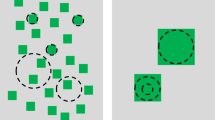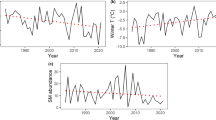Summary
Food availability is frequently hypothesized to be important in the regulation of territorial size. Recent theory suggests animals should respond to increased food availability by decreasing their territory. Most demonstrations of this relationship between food and territory are correlative, and few experimental tests of this hypothesis have been conducted.
A field-experimental mainpulation was conducted to test three predictions of the hypothesis that food is a proximate stimulus for regulation of territory. The Rufous-sided Towhee, an insectivorous bird that is a permanent resident of chaparral in Arizona, was used to test the predictions that weekly area, total area, and fluctuations in area would be smaller within experimentally manipulated territories. Food resources were increased within five experimental territories and the response was compared with five control territories.
The results did not support any of the three predictions. The hypothesis that food is a proximate stimulus for regulating territorial size was rejected. Two alternative hypotheses, that habitat quality or competition are proximate stimuli for regulating territories, could not be rejected.
Similar content being viewed by others
References
Bent, A.C.: Life histories of North American Cardinals, Grosbeaks, Buntings, Towhees, Finches, Sparrows and their allies. U.S. Natl. Mus. Bull. 237 (1945)
Brown, J.L.: The evolution of diversity in avian territorial systems. Wil. Bul. 76, 160–169 (1964)
Brown, J.L.: Territorial behavior and population regulation in birds. Wil. Bul. 81, 293–329 (1969)
Brown, J.L., Orians, G.H.: Spacing patterns in mobile animals. Ann. Rev. Ecol. Syst. 1, 239–262 (1970)
Carpenter, F.L., MacMillen, R.E.: Threshold model of feeding territoriality and test with a Hawaiian honey-creeper. Science 194, 639–642 (1976)
Covich, A.P.: Analyzing shapes of foraging areas: some ecological and economic theories. Ann. Rev. Ecol. Syst. 7, 235–257 (1976)
Dawson, W.R.: Temperature regulation and water requirements of the Brown and Abert Towhees, Pipilo fuscus and Pipilo aberti. Univ. Calif. Publ. Zool. 59, 81–124 (1954)
Dill, L.M.: An energy-based model of optimal feeding-territory size. Theo. Pop. Biol. 14, 396–429 (1978)
Ebersole, J.P.: Food density and territory size: an alternate model and a test on the reef fish Eupomacentrus leucosticus. Amer. Natur. 115, 492–501 (1980)
Ewald, P.W., Carpenter, F.L.: Territorial response to energy manipulations in the Anna hummingbird. Oecologia (Berl.) 31, 277–292 (1978)
Franzblau, M.A.: The effects of food resource manipulation on territory size of the Rufous-sided Towhee Pipilo erythrophthalmus montanus (Swarth). M.S. Thesis, Arizona State University. Tempe, Arizona 1980
Fretwell, S.D.: Populations in a Seasonal Environment. Monographs in Population Biology 5. Princeton, New Jersey: Princeton University Press 1972
Fretwell, S.D., Lucas, H.L.: On territorial behavior and other factors influencing habitat distribution in birds. Acta Biotheo. XIX, 16–36 (1970)
Gass, C.L.: Territory regulation, tenure and migration in rufous hummingbirds. Can. J. Zool. 57, 914–923 (1979)
Greenlaw, J.S.: The importance of food in the breeding system of the Rufous-sided Towhee, Pipilo erythrophthalmus (L.) Ph. D. Diss., Rutgers Univ. New Brunswick, N.J. 1969
Hildén, O.: Habitat selection in birds. A review. Ann. Zool. Fenn. 2, 53–74 (1965)
Hinde, R.A.: The biological significance of territories of birds. Ibis 98, 340–369 (1956)
Hixon, M.A.: Food production and competitor density as the determinants of feeding territory size. Amer. Natur., 115, 510–530 (1980)
Hollander, M., Wolfe, D.A.: Nonparametric Statistical Methods. New York: J. Wiley and Sons 1973
Kodric-Brown, A., Brown, J.H.: Influence of economics, interspecific competition, and sexual dimorphism on territoriality of migrant Rufous hummingbirds. Ecology 59, 285–296 (1978)
Krebs, J.R.: Territory and breeding density in the Great Tit Parus major. Ecology 52, 2–22 (1971)
Morse, D.H.: Variables affecting the density and territory size of breeding spruce wood warblers. Ecology 57, 290–301 (1976)
Myers, J.P., Connors, P.G., Pitelka, F.A.: Territory size in wintering sanderlings: the effects of prey abundance and intruder density. Auk 96, 551–561 (1979a)
Myers, J.P., Connors, P.G., Pitelka, F.A.: Territoriality in nonbreeding shorebirds. Studies in Avian Biology 2, 231–246 (1979b)
Orians, G.H.: Ecological aspects of behavior. In: Avian Biology, Vol. 1 (D. Farner, J.R. King, eds.). pp. 513–546. New York: Academic Press 1971
Owen-Smith, N.: On territoriality in ungulates and an evolutionary model. Quart. Rev. Biol. 52, 1–38 (1977)
Powell, J.R., Taylor, C.E.: Genetic variation in ecologically diverse environments. Amer. Sci. 67, 590–596 (1979)
Seastedt, T.R., Maclean, S.F.: Territory size and composition in relation to resource abundance in Lapland longspurs breeding in arctic Alaska. Auk 96, 131–142 (1979)
Simon, C.A.: The influence of food abundance on territory size in the iguanid lizard, Sceloperus jarrovi. Ecology 56, 993–998 (1975)
Slaney, P.A., Northeote, T.G.: Effects of prey abundance on density and territorial behavior of young rainbow trout (Salmo gairdneri) in laboratory stream channels. J. Fish. Res. Board Can. 31, 1201–1209 (1974)
Stenger, J.A.: Food habits and available food of ovenbirds in relation to territory size. Auk 75, 335–346 (1958)
Stenger, J.A., Falls, J.B.: The utilized territory of the ovenbird. Wil. Bul. 71, 124–140 (1959)
Stimson, J.: The role of the territory in the ecology of the intertidal limpet Lottia gigantea (Gray). Ecology 54, 1020–1030 (1973)
Symons, P.E.K.: Behavioural adjustment of population density to available food by juvenile atlantic salmon. J. Anim. Ecol. 40, 569–587 (1971)
Weeden, J.S.: Territorial behavior of the tree sparrow. Condor 67, 192–209
Wilson, E.O.: Sociobiology. Harvard University: Belknap 1975
Author information
Authors and Affiliations
Rights and permissions
About this article
Cite this article
Franzblau, M.A., Collins, J.P. Test of a hypothesis of territory regulation in an insectivorous bird by experimentally increasing prey abundance. Oecologia 46, 164–170 (1980). https://doi.org/10.1007/BF00540122
Received:
Issue Date:
DOI: https://doi.org/10.1007/BF00540122




